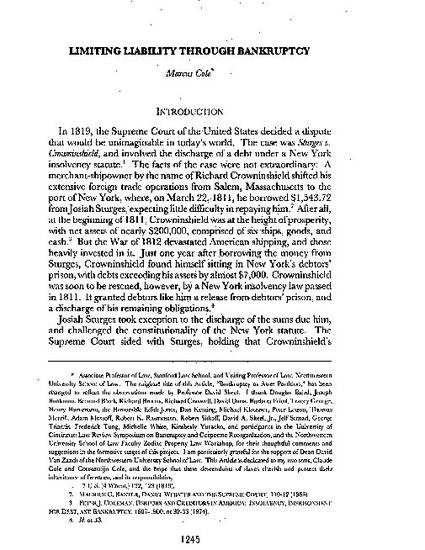
- Bankruptcy Law and
- Law
The purpose of this Article is to expose that function of bankruptcy law that distinguished it from English and Colonial insolvency law, and to determine the scope of and need for bankruptcy law to perform that function in contemporary society. I posit that the distinguishing character of bankruptcy law was, and continues to be, its ability to serve as a temporal asset partitioning device. By asset partition, I mean the ability of a structure to sequester the assets of an owner of an enterprise from the reach of the creditors of that enterprise, or the assets of the enterprise from the reach of the creditors of the firm's owners.1" In short, bankruptcy law is a limited liability device. It achieves this quality through the operation of the discharge it affords to debtors falling within its protective hedge. Bankruptcy law's ability to act as a limited liability device is what rendered it very useful, if not indispensable, to commercial existence before the 19th century. It is also this quality that makes bankruptcy law essential in certain contemporary circumstances, but superfluous, and perhaps pernicious, in others.
Available at: http://works.bepress.com/g-cole/7/
